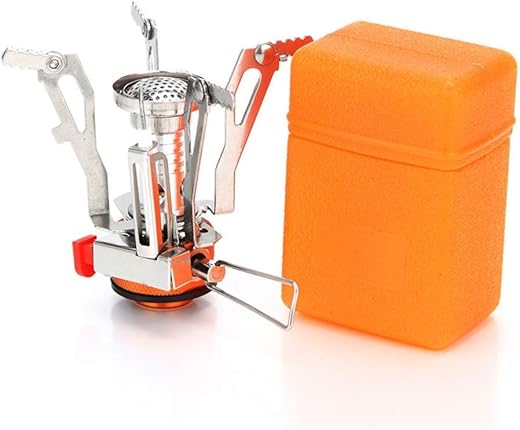
If you’re an avid backpacker, you know that every ounce counts when it comes to packing your gear. The thrill of the great outdoors can quickly lose its charm if you’re left struggling with heavy equipment or making do without hot meals. That’s where a lightweight budget camping stove comes into play—providing you with the comfort of warm food and drink after a long day of hiking, without straining your pack. In this blog post, we’ll explore the best options available, catering to various budgets and preferences, so you can make an informed choice and focus on enjoying your adventure. Let’s dive into the world of camping stoves and find the perfect one to accompany you on your next journey!



Are Budget Stoves Worth It? A Comparison of 3 Models
Key Features to Look for in a Budget Camping Stove
When preparing for your next backpacking adventure, selecting an appropriate camping stove is paramount. A lightweight budget camping stove can enhance your outdoor cooking experience without breaking the bank. Below, we will discuss the essential features to consider, ensuring you make an informed decision while minimizing pack weight and maximizing convenience.
Weight
One of the most crucial aspects to consider when selecting a camping stove is its weight. As a backpacker, you will want a stove that is lightweight, allowing you to save precious ounces. A heavy stove can add unnecessary burden to your pack, especially on long hikes.
- Recommended Weight: Aim for stoves that are under 3 pounds. Models like the MSR PocketRocket 2, which weighs just 2.6 ounces, are ideal for those looking to minimize weight.
- Why It Matters: A lighter stove will keep your pack manageable, making those long hikes more enjoyable.
Fuel Type
The fuel type of your camping stove is another key factor. Different stoves operate on various fuel sources, including propane, butane, or liquid fuel. Your choice will impact not only performance but also convenience in transportation and availability.
- Canister Stoves: The Jetboil Zip uses butane canisters, making it compact and easy to use, but requires you to purchase canisters separately.
- Liquid Fuel Stoves: The Coleman Classic operates on liquid fuel, providing versatility in the field but can be bulkier and heavier.
- Why It Matters: Choose a fuel type that aligns with your travel plans, ensuring easy transport and suitable cooking performance for your needs.
Cooking Efficiency
Cooking efficiency is another critical feature to consider. It indicates how quickly and evenly the stove can heat food and water, making meal prep quicker and easier.
- Heat Output: Look for stoves that offer a higher BTU rating—this measurement indicates the stove’s ability to produce heat. For example, the BRS 3000T boasts a 2500W output, making it one of the most efficient options for rapid boiling.
- Wind Resistance: Consider a stove’s design; models like the Camp Chef Mini Mountain feature windshields that protect the flame and enhance efficiency in breezy conditions.
- Why It Matters: Efficient stoves save fuel, reduce cooking time, and can make a significant difference in cold weather.
Ease of Setup
A camping stove should be easy to set up, allowing you to focus on enjoying your outdoor experience rather than wrestling with equipment.
- Instant Ignition: Look for stoves with built-in igniters. The Soto WindMaster comes with a piezo igniter, making lighting the stove a breeze.
- User-Friendly Design: Stoves like the GSI Infinity Trail offer quick setup with adjustable leg designs, perfect for uneven terrain.
- Why It Matters: A straightforward setup means more time for cooking and enjoying the outdoors, and less time fumbling with equipment.
Durability
Durability plays a vital role in any camping gear. A budget stove must withstand the rigors of outdoor cooking, from the rugged trails to various weather conditions.
- Materials: Look for stoves made from anodized aluminum or stainless steel, as these materials are sturdy yet lightweight. The Primus Lite+ is constructed from hard anodized aluminum, ensuring it lasts.
- Warranty: Check if the manufacturer offers a warranty or guarantee. Brands like MSR often back their products with warranties, providing extra assurance.
- Why It Matters: A durable stove will last through many camping trips, making it a more economical choice in the long run.
Comparison of Recommended Models
| Feature | MSR PocketRocket 2 | Jetboil Zip | Soto WindMaster | BRS 3000T |
|---|---|---|---|---|
| Weight | 2.6 ounces | 14 ounces | 2.5 ounces | 1 ounce |
| Fuel Type | Canister | Canister | Canister | Canister |
| BTU Output | 2500 BTU | 900 BTU | 2800 BTU | 2500 BTU |
| Ignition | Manual | Integrated | Integrated | Manual |
| Material | Aluminum | Aluminum | Aluminum | Aluminum |
| Durability | High | High | High | Moderate |
By keeping these features in mind, you will be well-equipped to choose a budget camping stove that caters to your specific needs while still delivering a rewarding cooking experience in the great outdoors. Whether you prioritize weight, fuel type, cooking efficiency, ease of setup, or durability, identifying the right balance among these features can elevate your backpacking trips significantly.
Top Lightweight Budget Camping Stoves for Backpacking
When it comes to backpacking, having a reliable and lightweight camping stove can make all the difference. However, finding a budget-friendly option that delivers good performance is essential for many outdoor enthusiasts. Here’s a curated list of the best lightweight budget camping stoves available on the market.
1. MSR PocketRocket 2
Key Specifications
- Weight: 2.6 ounces (73 grams)
- Fuel Type: Canister gas
- Boil Time: 3.5 minutes for 1 liter
- Dimensions: 4 x 4 inches (collapsed)
Price Range
- Approximately $45 – $60
Pros
- Ultralight and compact, making it ideal for backpacking.
- Extremely quick boil time.
- Comes with a bright, durable carry bag.
Cons
- Requires separate purchase of fuel canisters.
- Limited stability with larger pots.
User Reviews
- “This stove is a lifesaver for long hikes. It’s incredibly lightweight and boils water quickly.”
- “I love its portability, but I wish it had a wider base for stability.”
2. Coleman Portable Camp Stove
Key Specifications
- Weight: 6.2 pounds (2.8 kg)
- Fuel Type: Propane or butane
- Output: 10,000 BTUs
- Dimensions: 21.5 x 12 x 4.5 inches
Price Range
- Approximately $60 – $80
Pros
- Heats quickly and efficiently.
- Can cook multiple meals due to dual burners.
- Large surface area for various pots and pans.
Cons
- Heavier compared to other backpacking stoves.
- Slightly bulkier, not ideal for long-distance trekking.
User Reviews
- “Amazing for car camping. Not the best for backpacking, but perfect for short hikes.”
- “Solid stove with great heat output. Just a bit heavy for my taste.”
3. Jetboil Zip Cooking System
Key Specifications
- Weight: 13.1 ounces (370 grams)
- Fuel Type: Canister gas
- Boil Time: 2 minutes for 500ml
- Dimensions: 8 x 5.5 inches
Price Range
- Approximately $70 – $100
Pros
- Integrated cooking system for quick heating.
- Lightweight and compact.
- Excellent fuel efficiency.
Cons
- Higher price point for those on a strict budget.
- Limited cooking capacity (best for boiling water).
User Reviews
- “Unmatched efficiency! Boils water faster than anything I’ve used before.”
- “Excellent for solo hikers, as long as you stick to boiling.”
4. BRS 3000T Mini Stove
Key Specifications
- Weight: 0.9 ounces (25 grams)
- Fuel Type: Canister gas
- Output: 27,000 BTUs
- Dimensions: 2.3 x 1.6 x 1.4 inches
Price Range
- Approximately $15 – $25
Pros
- Incredibly lightweight and compact.
- Very affordable and budget-friendly.
- High-output flame.
Cons
- Fragile construction; requires careful handling.
- Limited control over simmering.
User Reviews
- “It’s a fantastic little stove—hard to believe it’s so cheap!”
- “Great simple stove. Just be careful not to drop it.”
5. Soto WindMaster Stove
Key Specifications
- Weight: 3 ounces (85 grams)
- Fuel Type: Canister gas
- Output: 13,800 BTUs
- Dimensions: 3.1 x 3.1 x 4.2 inches (collapsed)
Price Range
- Approximately $40 – $50
Pros
- Exceptional performance in windy conditions.
- Good fuel efficiency.
- Comes with a built-in igniter for added convenience.
Cons
- Slightly heavier than other ultralight options.
- No pot support for large pots.
User Reviews
- “This is my go-to stove for windy camping trips. It holds up like a champ.”
- “Love the built-in igniter, saves a lot of hassle in the field.”
| Stove Name | Weight | Fuel Type | Price Range | Boil Time for 1L | User Rating |
|---|---|---|---|---|---|
| MSR PocketRocket 2 | 2.6 ounces | Canister gas | $45 – $60 | 3.5 minutes | ★★★★☆ |
| Coleman Portable Camp | 6.2 pounds | Propane/butane | $60 – $80 | N/A | ★★★★ |
| Jetboil Zip | 13.1 ounces | Canister gas | $70 – $100 | 2 minutes | ★★★★★ |
| BRS 3000T Mini Stove | 0.9 ounces | Canister gas | $15 – $25 | N/A | ★★★★☆ |
| Soto WindMaster | 3 ounces | Canister gas | $40 – $50 | N/A | ★★★★☆ |
This selection of budget-friendly lightweight camping stoves covers a variety of needs and preferences for backpackers. With careful consideration of specifications, pros, and cons, you can find the perfect stove that fits your budget and enhances your outdoor cooking experience.
Comparing Performance: Fuel Efficiency and Cooking Speed
When it comes to selecting a camping stove, understanding the nuances of fuel efficiency and cooking speed is crucial—especially for backpackers embarking on long trips where every ounce counts. This section deep dives into how various camping stoves perform in these two significant areas and why they matter.
Fuel Efficiency: Measuring Conservation
Why Fuel Efficiency Matters
For backpackers, fuel efficiency can mean the difference between savoring a warm meal by the campfire and rationing food due to a lack of cooking fuel. A stove that burns fuel efficiently allows you to carry less without sacrificing the quality of your meals.
Comparative Analysis of Fuel Efficiency
Here are a few popular camping stoves with insights into their fuel efficiency:
| Stove Model | Fuel Type | Boil Time (1L) | Fuel Consumption (g/hr) | Run Time (with 100g fuel) |
|---|---|---|---|---|
| MSR PocketRocket 2 | Isobutane/Propane | 3.5 min | 8.1 | 12.3 hours |
| Jetboil FLASH | Isobutane/Propane | 2.5 min | 12 | 8.33 hours |
| Primus Eta Lite II | Isobutane/Propane | 4 min | 7.5 | 13.3 hours |
| Coleman Exponent | Liquid Fuel | 5 min | 14 | 7.14 hours |
- MSR PocketRocket 2: This lightweight stove is a favorite among backpackers due to its impressive fuel efficiency and rapid boil time. It only consumes 8.1 grams of fuel per hour, making it a great option for longer trips where conserving fuel is essential.
- Jetboil FLASH: While this stove boasts the fastest boil time for 1 liter of water (just 2.5 minutes), it utilizes a higher amount of fuel (12 grams per hour). This means that while it cooks quickly, backpackers have to balance speed with fuel conservation.
- Primus Eta Lite II: Despite a slower boil time, its lower fuel consumption (7.5 grams per hour) provides an excellent balance for those who value efficiency over speed, especially useful on extended trips.
- Coleman Exponent: As one of the heavier models using liquid fuel, it might not be suitable for backpacking, but it offers a unique perspective when comparing different fuel types.
Cooking Speed: Time is of the Essence
The Importance of Cooking Speed
For many backpackers, cooking speed can be as vital as fuel efficiency, especially on tight itineraries. A stove that can boil water quickly allows you to prepare meals faster and get back on the trail.
Speed Comparison: Real-World Examples
- MSR PocketRocket 2: Boiling a liter of water in 3.5 minutes makes it a practical choice when you’re in a hurry. After a long day of trekking, getting a cup of hot tea or instant soup ready fast can elevate your camping experience.
- Jetboil FLASH: With its blazing-fast boil time of 2.5 minutes, this stove appeals to backpackers who want instant coffee or a quick meal after a strenuous hike. However, the trade-off comes in the form of higher fuel consumption, needing careful planning to ensure adequate fuel supply.
- Primus Eta Lite II: While it takes 4 minutes to boil a liter of water, the efficiency in fuel consumption means you can enjoy a hot meal without frequently resupplying on fuel.
Key Takeaways: Balancing Fuel Efficiency and Cooking Speed
Understanding the balance between fuel efficiency and cooking speed is essential for making informed decisions. Here are some key considerations for backpackers:
- Trip Duration: The longer the trip, the more important fuel efficiency becomes. For instance, on a week-long hiking journey, every ounce saved translates into a more enjoyable experience.
- Type of Meals: If you’re primarily consuming freeze-dried meals that require only boiling water, a faster boil time might be a priority. On the other hand, if you prefer cooking more complex meals, opting for a stove with better fuel economy may be beneficial.
- Backpack Weight: Consider the weight of your stove in relation to its fuel efficiency. A lighter stove that uses fuel more judiciously may ultimately be lighter than a bulkier stove with minimal fuel efficiency.
In conclusion, the selection of a camping stove hinges significantly on its fuel efficiency and cooking speed. Recognizing your personal needs and planned activities—be it a fast-paced backpacking trip or a more leisurely camping experience—can help optimize your outdoor cooking endeavors. By familiarizing yourself with the performances of various stove models, you can make an educated choice that aligns seamlessly with your adventures.
Final Thoughts on Choosing Your Ideal Lightweight Camping Stove
In conclusion, selecting the ideal lightweight budget camping stove for backpacking ultimately hinges on your specific requirements, including weight restrictions, cooking efficiency, and user-friendliness. By evaluating the essential features, exploring the top stove recommendations, and understanding performance metrics along with maintenance strategies, you can confidently make an informed choice that enhances your outdoor experiences without straining your wallet. Happy camping!




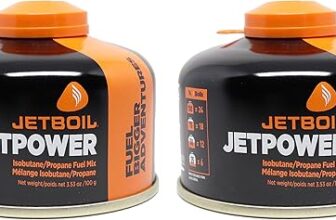
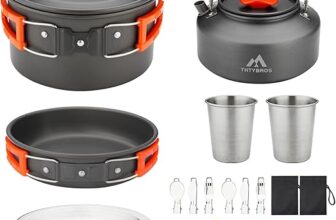
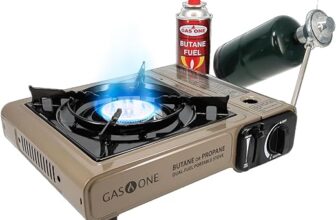
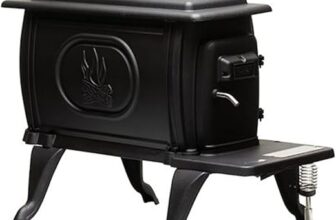

If you’re looking for a compact solution, check out the Fire Maple FMS-300T. It’s super light and has a great build quality. Perfect for backpacking!
Thanks for the tip! The Fire Maple FMS-300T has been getting good reviews, and it’s always helpful to have more options on the table!
Great suggestion! Fuel types can really impact your camping experience. I’ll definitely consider doing a deep dive on that in a future article!
I recently used the MSR PocketRocket 2 on a backpacking trip and it worked like a charm! Super lightweight and boiled water in no time. Anyone else have similar experiences?
Awesome to hear! The PocketRocket 2 is definitely a fan favorite for a reason. It’s always great to share real-life experiences with gear!
I once cooked a full meal with the Jetboil MiniMo in the freezing cold, and it performed flawlessly! Definitely worth the investment if you’re camping in colder climates.
Wow, that’s impressive! The Jetboil MiniMo is known for its efficiency in tough conditions. Thanks for sharing your success story!
I’d love to see a comparison of different fuel types for camping stoves! It’d be cool to know which one is the best for different situations.
Can anyone recommend a good budget stove for two people? I’m looking for something lightweight but still powerful enough to cook meals.
If you’re looking for a budget-friendly option for two, the Coleman Classic is a solid choice! It offers great value and can handle meals for two without breaking the bank.